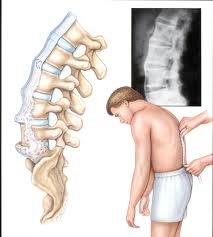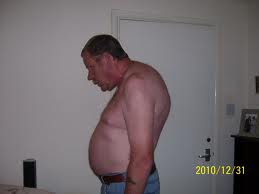Introduction:
Ankylosing Spondylitis (AS) is one of many forms of chronic inflammatory arthritis, affecting the spine, especially the joints between the vertebrae of the spine and the joints between the spine and the pelvis (sacro-iliac joints). It may also affect other joints of the body.
The joints are initially inflamed and this may be followed by progressive stiffness and inflexibility. It eventually leads to the fusion of the spine, giving permanent painful stiffness of the back. It is often called bamboo spine, as the spine tends get stiff like a bamboo. This condition is more common in males as compared to females and usually occurs in individuals between 16-40 years of age.
Causes:
The exact cause of Ankylosing spondylitis is not understood. It has been considered to be an autoimmune disease (like many others such as Diabetes, Rheumatoid Arthritis, Thyroiditis, etc.). Genetic factors are likely to be involved. The majority of people with Ankylosing spondylitis have a gene called HLA-B27. However, the presences of HLA-B27 (Human Leukocyte Antigen B27) is not absolutely diagnostic of Ankylosing Spondylitis. There are theories on its link with some bacterial infection as a triggering factor.
Diagnosis:
Presence of HLA-B27 antigen, increased levels of CRP (C- Reactive Proteins) and ESR (Erythrocyte Sedimentation Rate) along with suggestive clinical history help in diagnosis of Ankylosing spondylitis.
Symptoms:
- Painful stiffness of the lower back and hips which is often worse in the morning or after periods of inactivity.
- Over a period of time, the pain and stiffness may progress up the spine and to other joints such as hips, shoulders, knees and feet. Reduced mobility may be noted by the patient and gradually he may notice difficulty in bending the spine.
- In advanced stages of the condition patient may notice chronic stooping, stiff and inflexible spine, restricted expansion of the chest. Features such as loss of appetite, fatigue, weight-loss, inflammation of the eyes (iritis) and of the bowels may also be seen.
Homeopathic treatment
Homeopathic treatment helps two ways:
- Control underlying disease process
- Significant Relief in pain and stiffness
Homeopathic approach incorporates detailed study of the cases of AS inclusive of the genetic trend of the patients. The remedy prescribed after such detailed evaluation offers effective pain control as well as helps in controlling the progress of this condition.
Early cases of AS can be treated with good success with homoeopathy. Cases that have advanced to a moderate extent can also be helped, especially in preventing the further progress of the disease and limiting the pain. However, severe cases can only be relieved symptomatically with homoeopathic treatment. Homeopathy is strongly suggested for Ankylosing Spondylitis treatment, especially in the early and mid stages.





